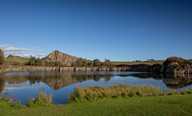Introduction
This spotlight page explores what the evidene tells us about the economic foundations of the North East.
GDP per head and productivity in the region is lower than the national average, which impacts on lower wages in the North East.
This is partly due to the sectoral composition of the region, though there are growth sectors with a significant presence in the region too such as the Net Zero sector.
International investment and trade are key drivers of growth in the North East. Goods exports and new jobs created through FDI are both above average in the region.




